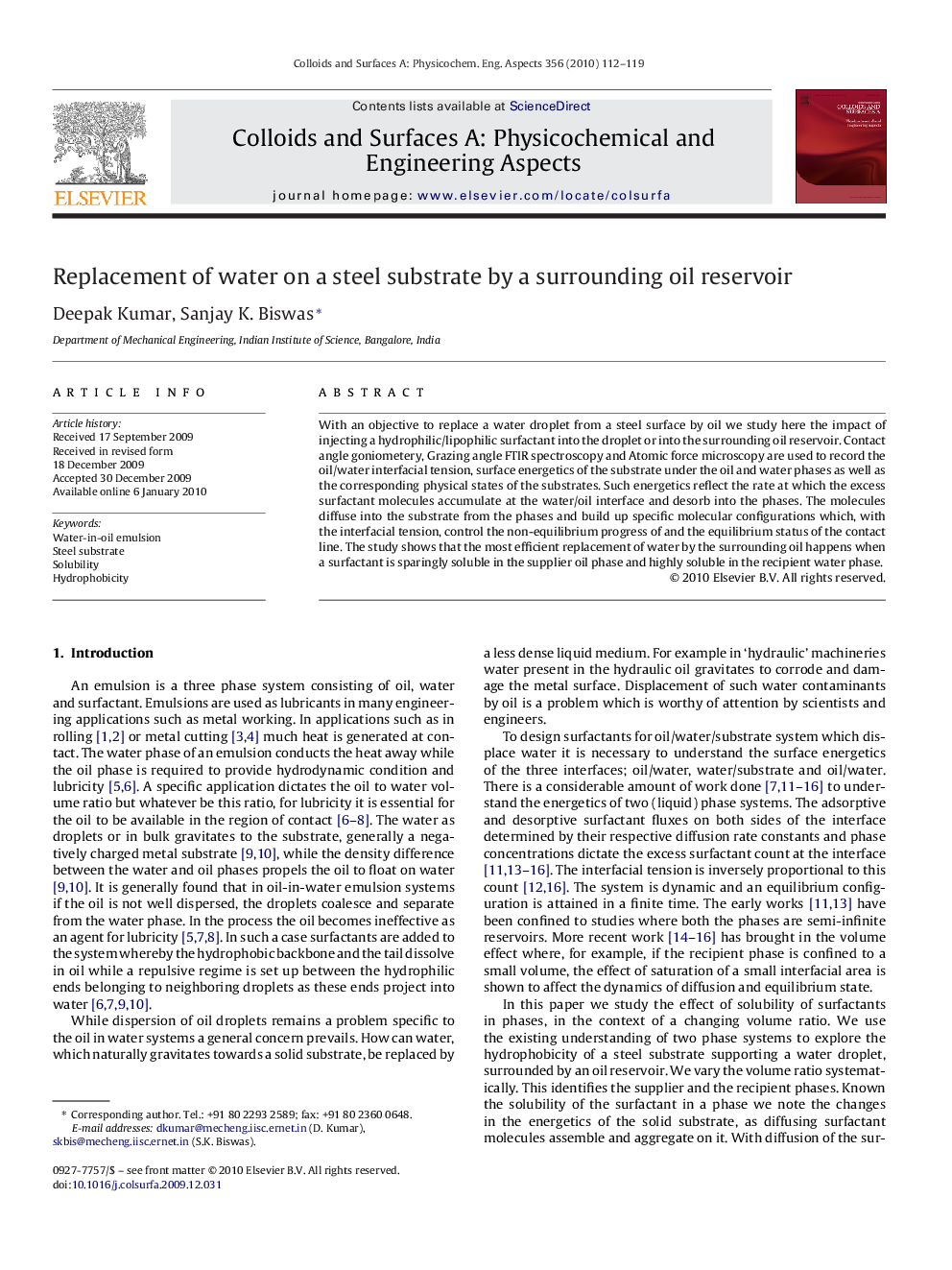| Article ID | Journal | Published Year | Pages | File Type |
|---|---|---|---|---|
| 595512 | Colloids and Surfaces A: Physicochemical and Engineering Aspects | 2010 | 8 Pages |
Abstract
With an objective to replace a water droplet from a steel surface by oil we study here the impact of injecting a hydrophilic/lipophilic surfactant into the droplet or into the surrounding oil reservoir. Contact angle goniometery, Grazing angle FTIR spectroscopy and Atomic force microscopy are used to record the oil/water interfacial tension, surface energetics of the substrate under the oil and water phases as well as the corresponding physical states of the substrates. Such energetics reflect the rate at which the excess surfactant molecules accumulate at the water/oil interface and desorb into the phases. The molecules diffuse into the substrate from the phases and build up specific molecular configurations which, with the interfacial tension, control the non-equilibrium progress of and the equilibrium status of the contact line. The study shows that the most efficient replacement of water by the surrounding oil happens when a surfactant is sparingly soluble in the supplier oil phase and highly soluble in the recipient water phase.
Related Topics
Physical Sciences and Engineering
Chemical Engineering
Colloid and Surface Chemistry
Authors
Deepak Kumar, Sanjay K. Biswas,
